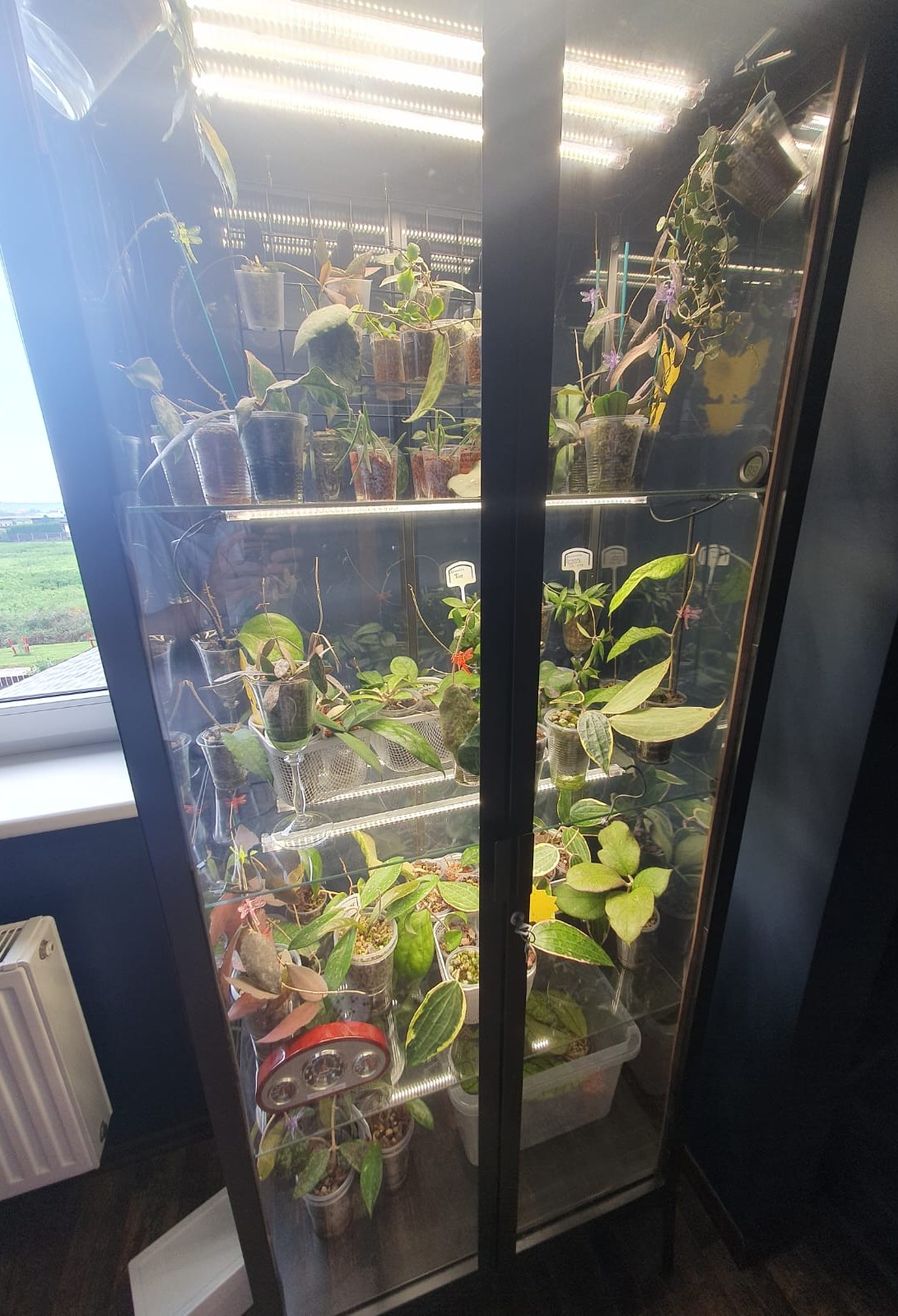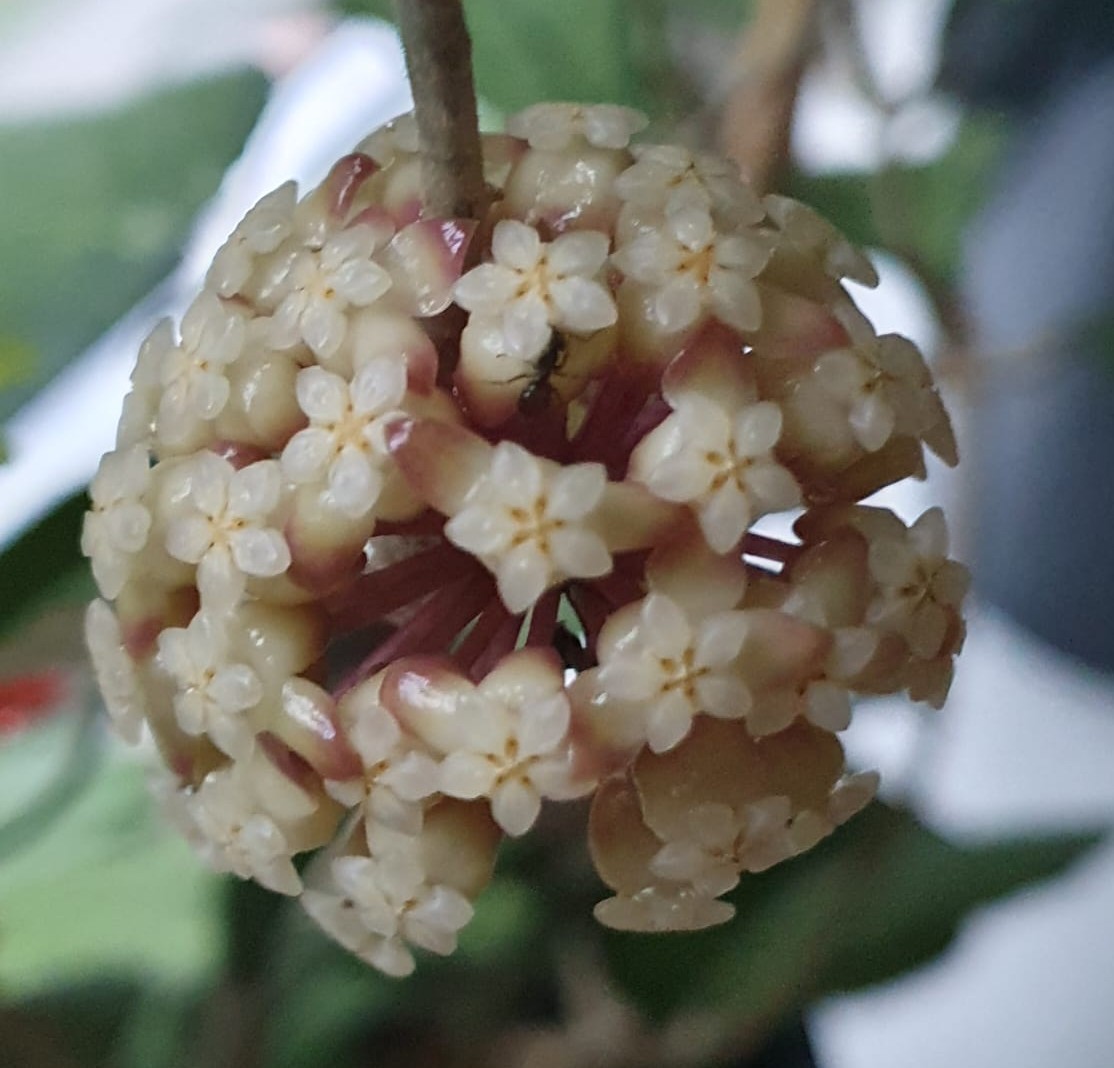
Light for my hoyas
How much light do my hoyas get, what types of lighting can they have, and what do I use now?
My first hoyas, after rooting in the greenhouse, continued to grow on the windowsills of the house. Hoyas like to grow best on east-facing windowsills, where they get the best light possible - natural daylight and sun. However, hoyas can also grow on west-facing windowsills, but then you have to see how the hoya feels on hot summer afternoons - it is possible that there will be too much sun, the hoya will be too hot, then you can try to shade it or, as I have done, when during a couple of the hottest summer afternoon hours I moved the hoyas a little deeper into the room, but this is quite troublesome, because it requires constant attention, especially if the hoya is still relatively young. Moreover, there are many varieties that do not tolerate direct sunlight at all, the leaves can burn, instead of turning beautiful. I have also used a north-facing windowsill to grow hoya, but then hoya grows very, very slowly and only very slightly in the summer season, the rest of the time it just stands beautifully:) and looks beautiful:)
In its homeland, most hoyas grow shaded by the foliage of large trees and receive little sun and indirectly through the leaves of trees, so hoya also likes to stretch its mustaches towards the light upwards, then it grows quite quickly. This feature is worth using if you want hoya to grow quickly and then you can place it directly under plant lamps. In my experience, plant lamps placed above the hoya create the best conditions for hoya growth and development. There are species and varieties of hoya that still want more sunlight and can grow on a south-facing windowsill, but I don't have such windowsills in my house, so I can't share my observations.
Currently, my large hoyas grow on windowsills or in flower stands, to which I attach plant lamps, because the stands are placed deeper in the rooms, away from the windows, and then there is not enough light for the hoyas. The plant lamps that I use are not very powerful, so I look more closely at which hoyas need more light, then I attach the plant lamps closer to them, but which ones can grow in weaker light, respectively, they get less. I measure the amount of lighting from the plant lamps with a free application Luxmeter downloaded to my mobile phone, which provides information about the amount of lighting in lumens. Lumens (lm) - a unit of measurement of light flux, or more simply, the brightness of the lamp. Those hoyas that are light-loving, get 8000 - 9000 lm, most grow at 2000-3000 lm. If there are fewer lumens, the hoya will most likely not grow, will simply stand still or grow extremely slowly. This property of hoyas has also been useful to me in its own way. For example, when space on the windowsills starts to run out and while I'm thinking of the next places to place my hoyas, the hoya is patiently waiting :) for better conditions - the hoya doesn't grow, but it doesn't die either :) The unit of measurement Kelvin (K) is also used to determine the power of plant lamps, but this unit of measurement means more the color of the light, not the power. The more Kelvin in a plant lamp, the whiter the light will be. Currently, I use more white lamps, where Kelvin is correspondingly higher, because it seems to me to be more pleasant lighting. Also, plant lamps can have different color spectra - blue helps to form strong leaves and roots, red light - more flowers and fruits, but natural sunlight is full-spectrum light. I also have several bulbs with a pink tint, which I accidentally and unknowingly purchased, so I currently use them for those hoyas that I want to bloom better. I usually turn on the plant lamps around 7:00 - 8:00 in the morning, but turn them off around 22:00. This way, the hoyas receive 14-15 hours of additional lighting every day.
I also change the growing places of some hoyas from time to time, if I think that a hoya could grow better. However, when changing the growing place of a hoya, you should take into account that the hoya can adapt to the new conditions slowly, which means that you may have to wait a month or more to see the result and draw conclusions.
And another observation - if the hoya has started growing, then it likes this place and is satisfied with the existing lighting, etc. growing conditions, try not to touch/move it, because it may happen that the hoya stops again and does not grow further for a while, until it adapts to the existing place, the existing lighting again.
And finally - most hoyas grow very well on windowsills, in the light-rich season (spring to autumn) they will grow quite quickly, because there is enough natural light, but in the winter season they will simply go into hibernation :) These are the so-called easy-to-grow hoyas - for example, hoyas from the Carnosa species. However, there are hoyas that I call difficult-to-grow hoyas and which require special conditions - light is needed all year round and strong, air humidity needs to be higher than usual (85%-95%), the temperature of the growing environment or heat needs to be higher than the 20* Celsius we are used to (for example, hoyas Waymaniae Borneo or Archboldiana variegata), but the air humidity and temperature of the growing environment required for growing hoyas will follow in another blog post.
Good luck:)

